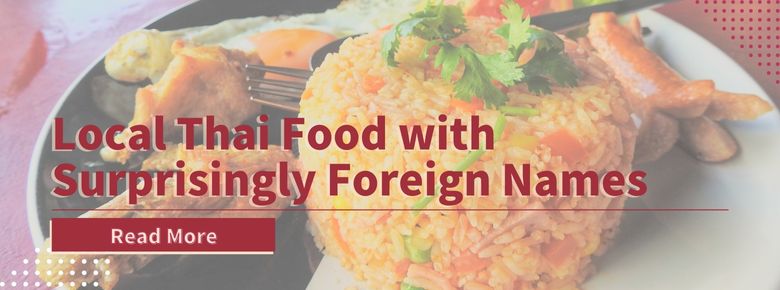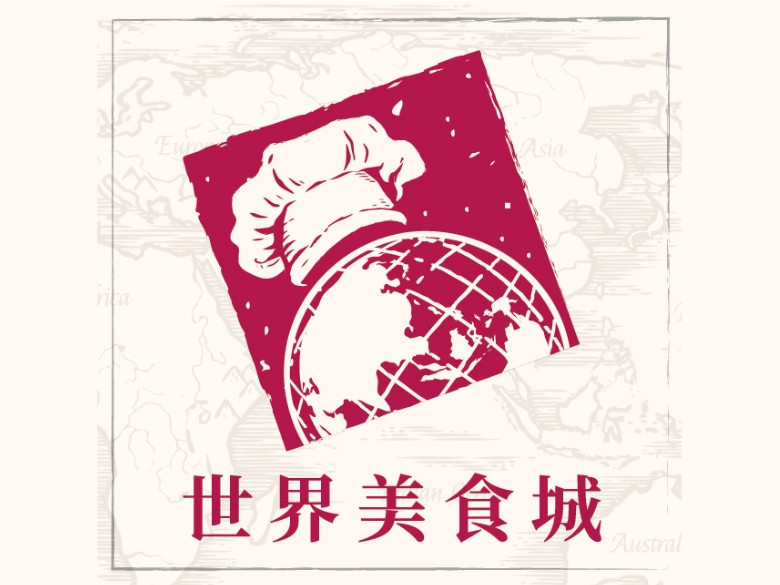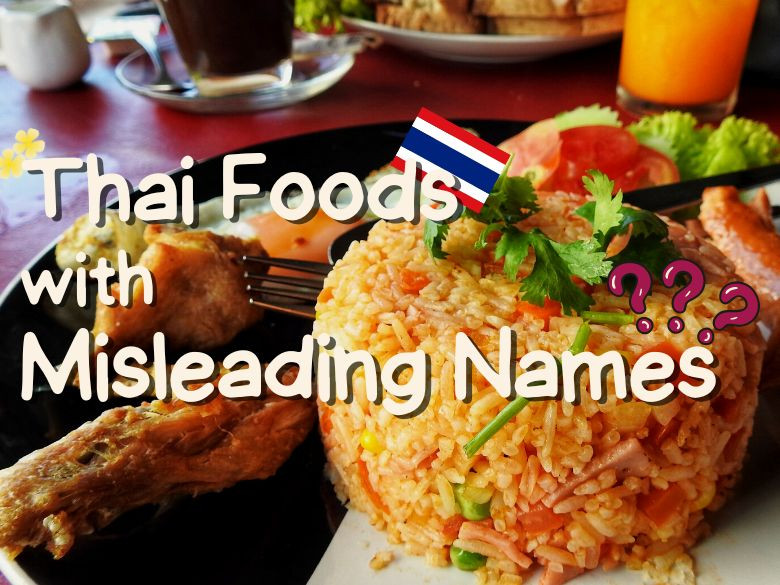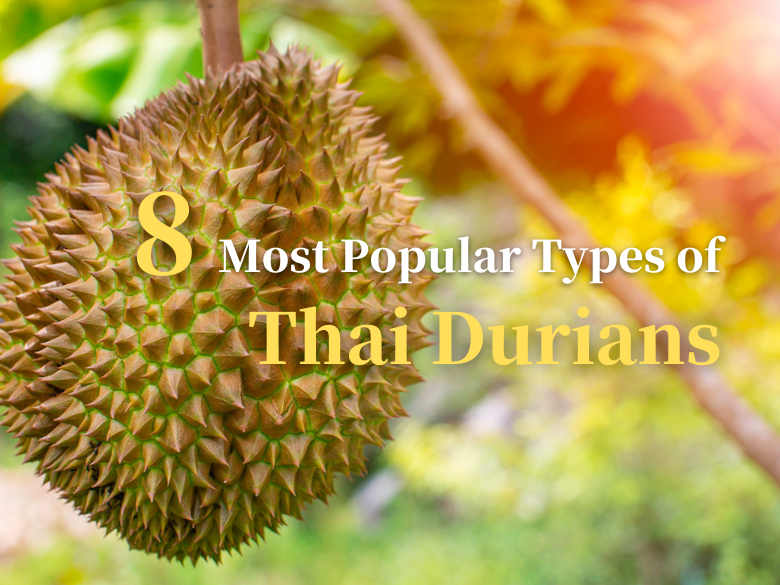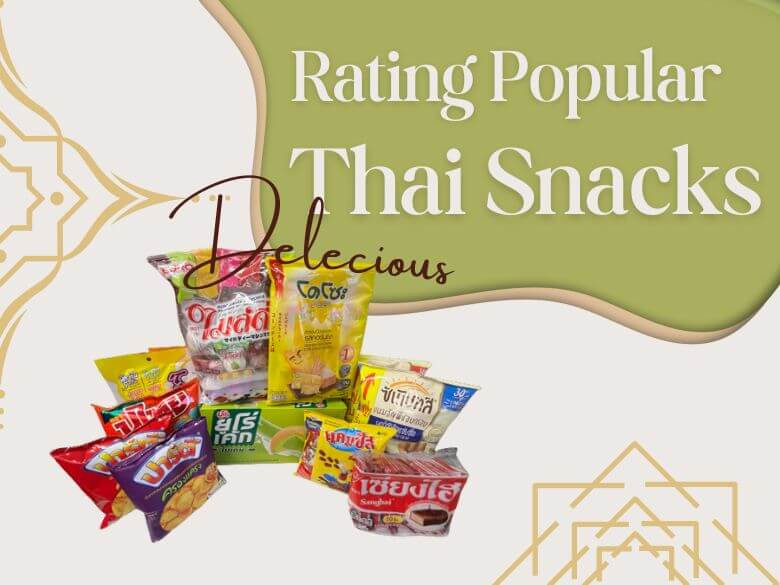Spice Up Your Life: Fun Facts about Thai and Taiwanese Cuisine
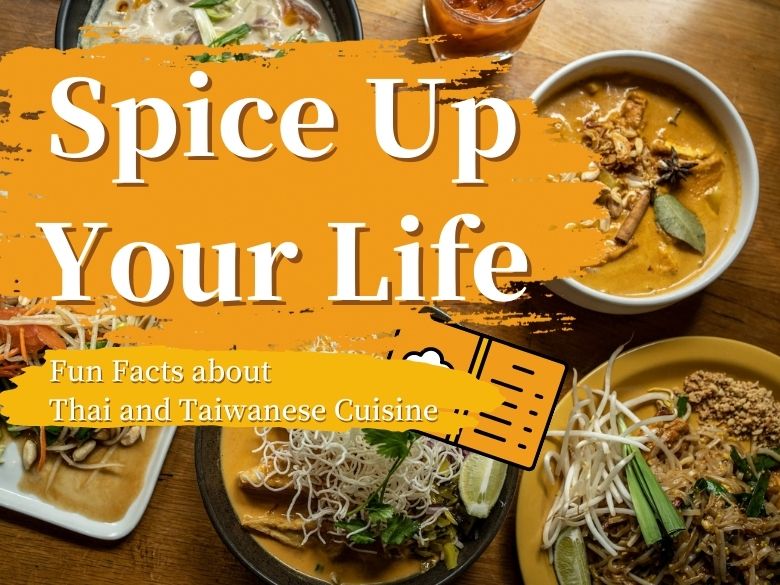
Even food ordering, the seemingly most unappealing part of dining, can become a whole new experience as long as you’re in different countries. Thailand, a major tourist destination in Southeast Asia, boasts stunning cuisine that amazes tourists from all over the world. In addition to the food itself, the various details involved in ordering also reflect Thailand's unique food culture. In this interview with our editor Nicky, a Thai living in Taiwan, for the World Gourmet Platform, we will learn about Thai culture behind food ordering, as well as some interesting experiences she has had in Taiwan.
Q1: Where do people usually eat in Thailand?
Nicky: In Thailand, food stalls selling dishes like rice, noodles, and porridge would open at 5 or 6 in the morning. What one eats for breakfast is similar to what one would eat for lunch or dinner. So when I first came to Taiwan, I found the breakfast shop culture quite unique.
In Thailand, stalls on the roadside mainly sell simple Thai-style dishes. In addition to ordering from the menu, as long as the stall can make it, you can tell the cooks the meat and side ingredients you want, and they will make it for you right away. There are lots of flavors to choose from. Of course, there are also buffet restaurants where customers can choose their desired dishes, priced at once afterwards.
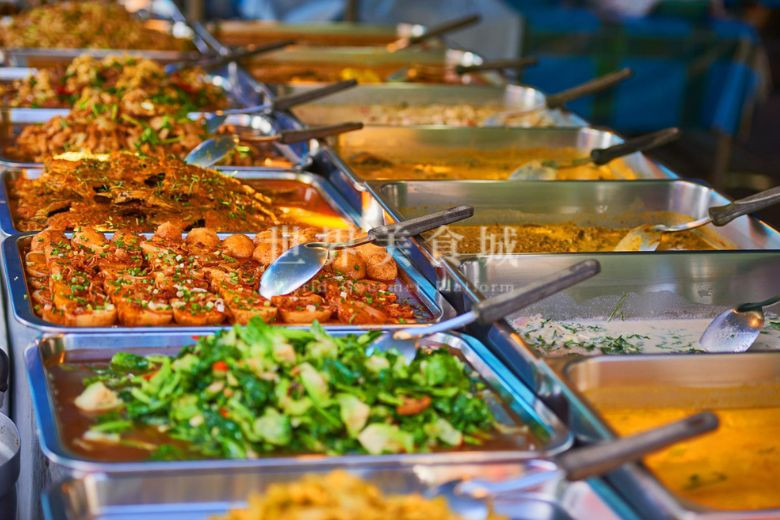
Some food stalls in Thailand provide free soup. For instance, in any Hainanese chicken rice restaurant, you may have free white carrot soup as much as you desire. However, buffet restaurants do not provide soup. As for the popular shrimp sour and spicy soup (tom yum goong) that tourists often order, it is only sold in restaurants. We don't usually have it in our daily lives, especially since the weather is so hot outside. Who can handle it?
During these days in Taiwan, I found that compared to food in Taiwan, food in Thailand is not as oily, but the flavor is heavier. Food in Thailand is also relatively cheaper, with a typical meal costing around 50-60 NTD (1.6-2 USD).
Q2: What do customers call vendors when ordering food?
Nicky: When ordering, we’d call older women “ba (ป้า; aunt)” and older men “lung (ลุง; uncle)”. If we and vendors are the same age, we’d call them “pi (พี่; older brother/sister).” Finally, we’d call vendors younger than us “nong (น้อง; younger brother/sister).” This is how we call vendors, and vice versa.
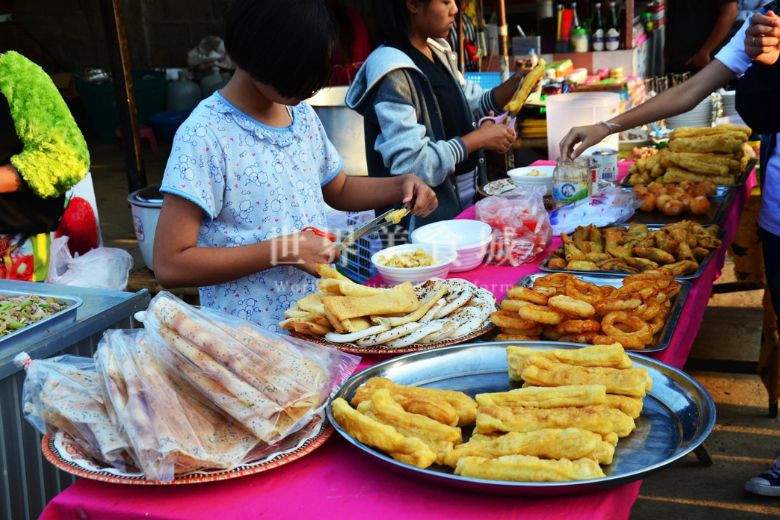
So to be honest, when I came to Taiwan and heard vendors call me “美女” (beautiful girl), I was genuinely confused, wondering if they wanted something from me. Because in Thailand, when strangers call you “handsome guy” or “beautiful girl” , most of the time they want to sell you cosmetic or skincare products.
Q3: Can you customize the portion size and level of spiciness of food?
Nicky: Basically, street food in Thailand sells food of different portion sizes. But unlike the Chinese terms "大份" (large portion) and "小份" (small portion), the Thai terms of sizes are literally translated as “regular” and “special.” The meal portion sizes in Thailand are generally smaller than in Taiwan.
As for spiciness, if you don't tell your preference in advance, they’ll usually make it medium spicy. However, you can specify the level of spiciness you want, be it large, medium, or mild spicy. Besides these three levels, you can also directly tell them how many chili peppers you want. For example, I've seen someone order green papaya salad and ask for only two chili peppers, while others asked for ten chili peppers to make it the spiciest!
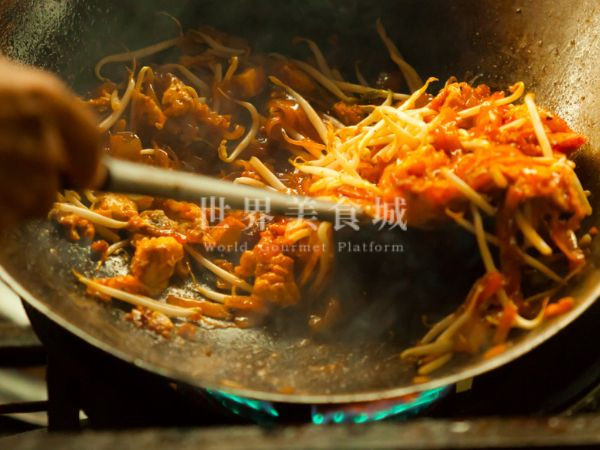
Personally, I add chili peppers to everything I eat. During my time in Taiwan, I found that the spiciness levels here aren’t on par with Thailand's at all. Taiwan's “大辣” (large spicy) is basically equivalent to Thailand's “medium spicy” or “mild spicy.” Also, if you order “mild spicy” in Thailand, the vendor will assume that you want it even less spicy and may ask, "You mean the spiciness for little kids?"
Q4: Anything to notice when ordering drinks in Thailand?
Nicky: In Thailand, besides food stalls, you can grab drinks directly from drink shelves. When ordering drinks in Thailand, you can adjust the sweetness and ice level, but you have to let the vendor know beforehand as they wouldn’t ask you automatically. If you don't customize, the drink will usually be very sweet, even too sweet for me! You also need to tell them how much ice you want, or they will fill the cup up with ice. The funny thing is that the amount of ice might look like a lot, but it will melt after walking for around five minutes, considering how hot it is in Thailand.
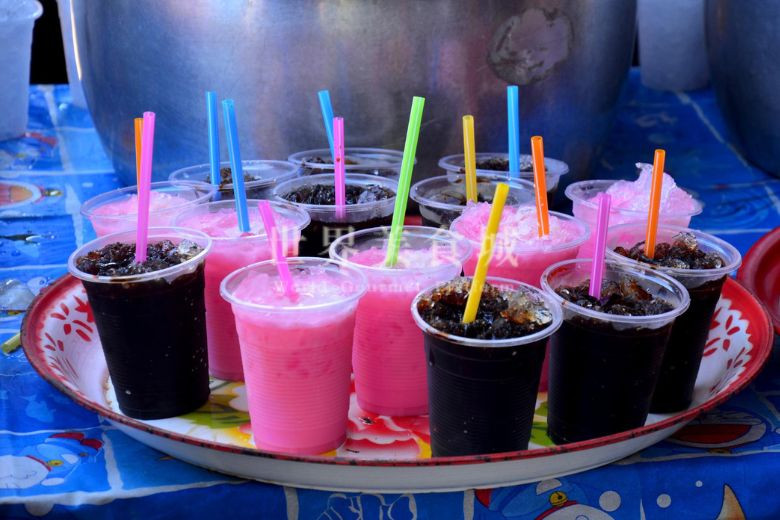
Many bubble tea shops have been popping up around Thailand. Similar to Taiwan's bubble tea shops, customers can freely choose the sweetness and ice level. On average, the price is similar to Taiwan, but there are also shops that are either very expensive or very cheap. The cheapest one costs only 19 TWD (about 0.6 USD) and can pay 5 TWD (about 0.2 USD) for tapioca pearls. The expensive one is like Tiger Sugar, with the cheapest one costing 120 TWD (about 4 USD). You can also add toppings like milk cap and coconut gel to your bubble tea. Among the toppings, herbal jelly and tapioca pearls are mostly added to Thai-style milk tea.
Q5: Are there any local dishes that could even confuse Thai people?
Nicky: Yes, there are some Thai dishes that even if you speak Thai, you can’t tell what they are from their names. For example, I recently learned about a Northeastern dish called “Soi Ju (ซอยจุ๊),” which is thinly sliced beef dipped in sauce. Literally, "Soi (ซอย)" means "cut" and "Ju (จุ๊)" means "dip". Without specific knowledge, you wouldn't know the meaning of the dish's name. Despite the same official language, there are different dialects and customs in different regions, so dishes from outside the central region, the origin of modern Thai language, may name things with their local dialects. Recently, more people have become aware of this dish simply because many YouTubers have made videos trying it out.
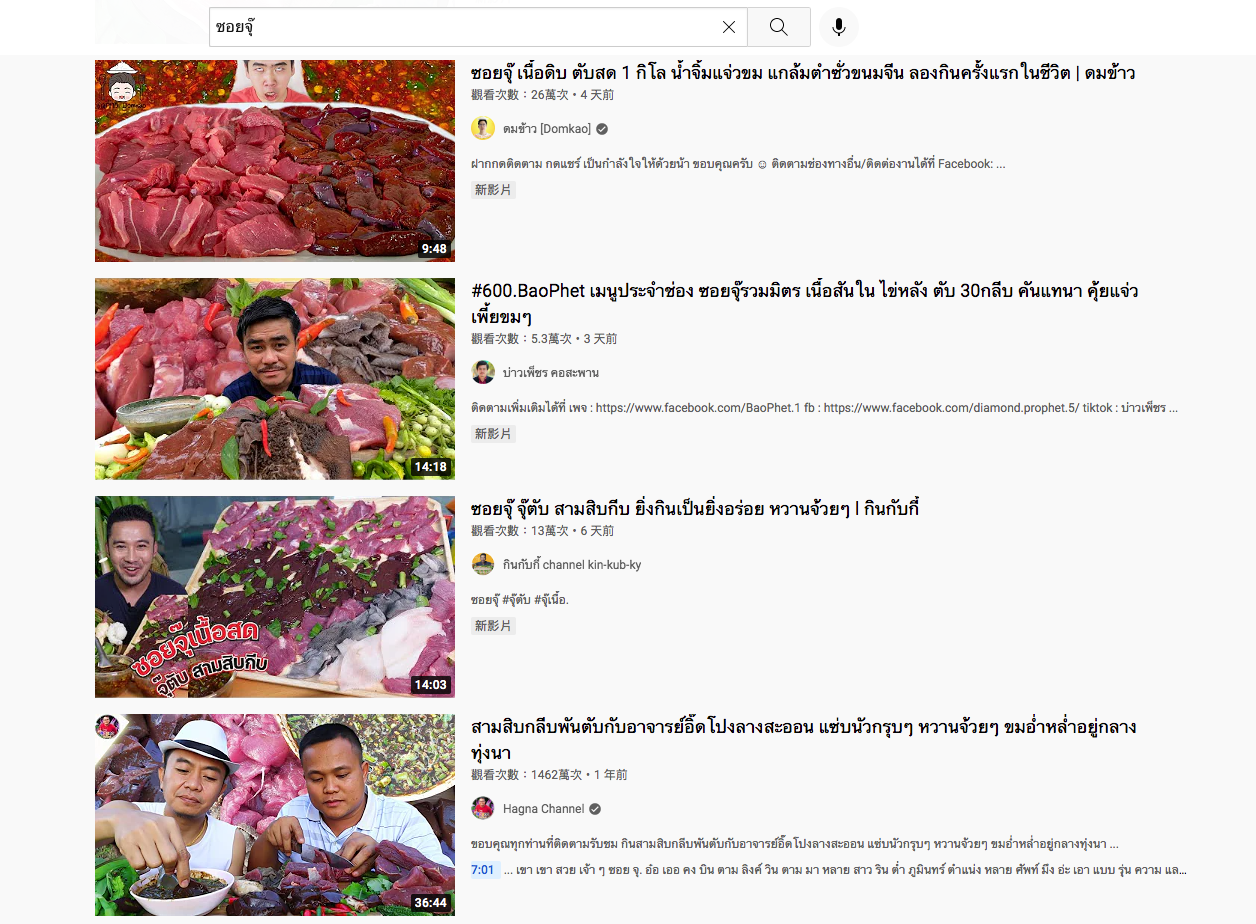
Other examples are dishes named after foreign countries, yet the dishes factually have no relationship with those countries.
Q6: What are the biggest differences between restaurants in Thailand and in Taiwan?
Nicky: The biggest difference between the two is the service styles. In Taiwan, customers need to “serve themselves” while the owner simply stands there and cooks. After the customers fill out the menu, they not only have to bring it to the owner, but also have to get themselves utensils. However, in Thailand, the utensils are already on the table, and there are staff who can help you place your order. You can even order directly on your mobile phone.
So when I came to Taiwan, I couldn’t stop thinking if it’s really okay for only one person to run the shop as the owner? On the contrary, Thailand's service is more like, “Don't move. Just sit there, and I'll help you out.” Also, there is no division of the menu into "dine-in menu" and "takeout menu" like in Taiwan. If you want to take out, just say so.
Finally, Thai menus come with photos, and even have English written on them. So when I came to Taiwan, I found it hard to adapt to menus that only had Chinese text. For example, I can imagine the same dish available in beef or chicken, but still have no idea what the meal would actually look like.
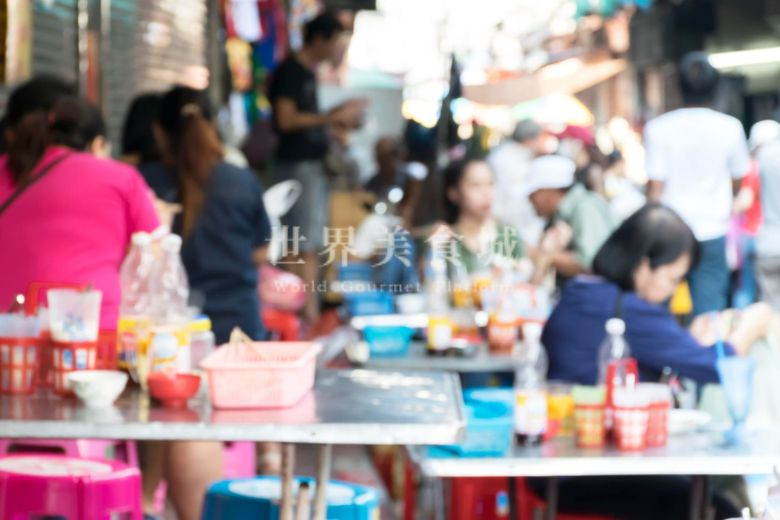
Food culture doesn’t only talk about food
From the sharing above, it can be seen that even subtle parts of dining can create completely different experiences. Besides gaining a new aspect of Thai food culture, one can also become aware of many cultural differences that are usually not noticed. What other details have you noticed about Thai food culture? This series will continue to provide more diverse perspectives and cultural knowledge, so stay tuned to World Gourmet Platform.

